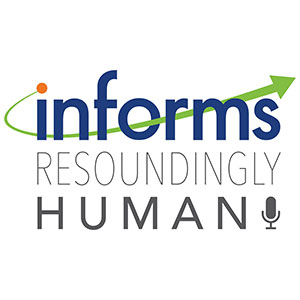
Coronavirus and the Flu
Some doctors worry the combination of coronavirus and the flu could tax our healthcare system. This afternoon, a deep dive into emerging research which suggests mask wearing can help to reduce the spread of both.

Some doctors worry the combination of coronavirus and the flu could tax our healthcare system. This afternoon, a deep dive into emerging research which suggests mask wearing can help to reduce the spread of both.

In 2017, Americans paid around $34 billion in overdraft fees. The hefty fees often hit consumers unexpectedly and can lead to dissatisfaction or even attrition. “Analyzing Bank Overdraft Fees with Big Data,” explores consumer behavior that causes the fees, just how the fees impact customers and banks, and how banks can better address the issue for the benefit of all. The paper was written by New York University Professor Xiao Liu, and Alan Montgomery and Kannan Srinivasan, both professors at Carnegie Mellon University. It was published in the December 2018 issue of Marketing Science, journal of the Institute for Operations Research and the Management Sciences (INFORMS).

Dr. Adarsh Bhimraj was feeling “helpless” in April about his ability to treat the dozens of Covid-19 patients admitted everyday to the Cleveland Clinic in Ohio. In those early weeks of the outbreak, Bhimraj and his colleagues struggled to understand why some patients died and others recovered. It happened quickly, he said, adding that the disease could turn in a moment, sending a patient unexpectedly to the intensive care unit, where some died in days.

On the day that a COVID-19 vaccine is approved, a vast logistics operation will need to awaken. Millions of doses must travel hundreds of miles from manufacturers to hospitals, doctor’s offices, and pharmacies, which in turn must store, track, and eventually get the vaccines to people all across the country. The Centers for Disease Control and Prevention, along with state and local health departments, coordinates this process. These agencies distributed flu vaccines during the 2009 H1N1 pandemic this way, and they manage childhood vaccines every day. But the COVID-19 vaccine will be a whole new challenge.

Just like a fresh piece of fish, vaccines are highly perishable products and must be kept at very cold, specific temperatures. The majority of COVID-19 vaccines under development—like the Moderna and Pfizer vaccines—are new RNA-based vaccines. If they get too warm or too cold they spoil. And, just like fish, a spoiled vaccine must be thrown away. So how do companies and public health agencies get vaccines to the people who need them?

Jeff Cohen
Chief Strategy Officer
INFORMS
Catonsville, MD
[email protected]
443-757-3565
An audio journey of how data and analytics save lives, save money and solve problems.


With seemingly no limit to the demand for artificial intelligence, everyone in the energy, AI, and climate fields is justifiably worried. Will there be enough clean electricity to power AI and enough water to cool the data centers that support this technology? These are important questions with serious implications for communities, the economy, and the environment.

It’s college graduation season, which means over 4 million seniors will graduate in the next few weeks, flooding the job market with new candidates. One area that has shown high potential for the right candidates is artificial intelligence and machine learning. Both disciplines are part of the larger data and analytics career path.

Drugs being explicitly developed to treat rare diseases are getting more expensive.

Robert F. Kennedy Jr., as the new secretary of Health and Human Services, is the nation’s de facto healthcare czar. He will have influence over numerous highly visible agencies, including the Centers for Disease Control and Prevention, the National Institutes of Health and the Food and Drug Administration, among others. Given that healthcare is something that touches everyone’s life, his footprint of influence will be expansive.

The recent US-China agreement to temporarily reduce tariffs is a major step for global trade, with tariffs on US goods entering China dropping from 125% to 10% and on Chinese goods entering the US decreasing from 145% to 30% starting May 14. While this has boosted markets and created optimism, key industries like autos and steel remain affected, leaving businesses waiting for clearer long-term trade policies.

With sweeping new tariffs on Chinese-made products set to take effect this summer, Americans are being urged to prepare for price hikes on everyday goods. President Donald Trump's reinstated trade policies are expected to affect a wide swath of consumer imports, including electronics, furniture, appliances, and baby gear. Retail experts are advising shoppers to act before the tariffs hit and prices rise.

Twenty years ago, few people would have been able to imagine the energy landscape of today. In 2005, US oil production, after a long decline, had fallen to its lowest levels in decades, and few experts thought that would change.

In the case of upgrading electrical and broadband infrastructure, new analysis from the University of Massachusetts Amherst reveals {that a} “dig once” strategy is almost 40% more economical than changing them individually.